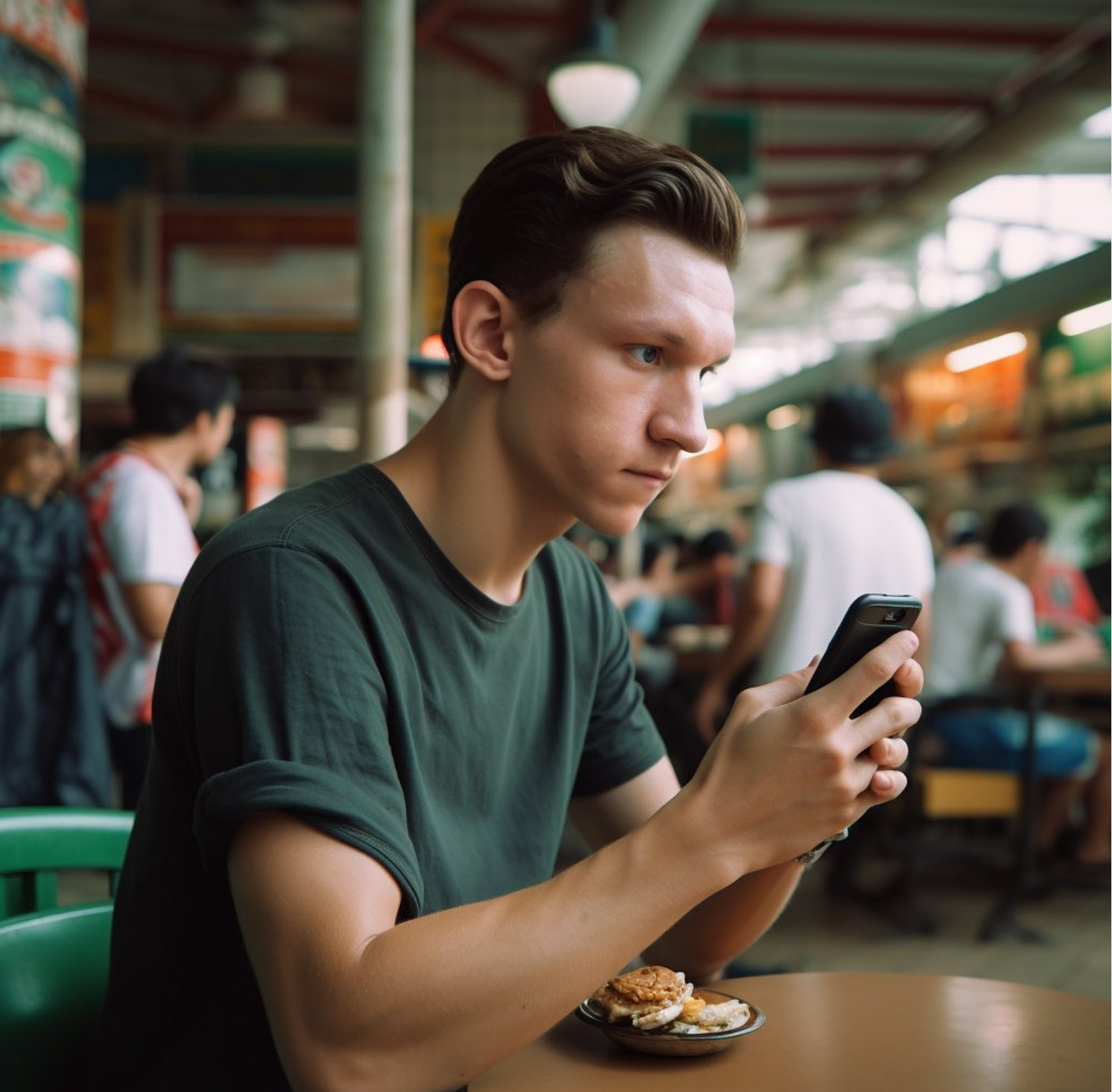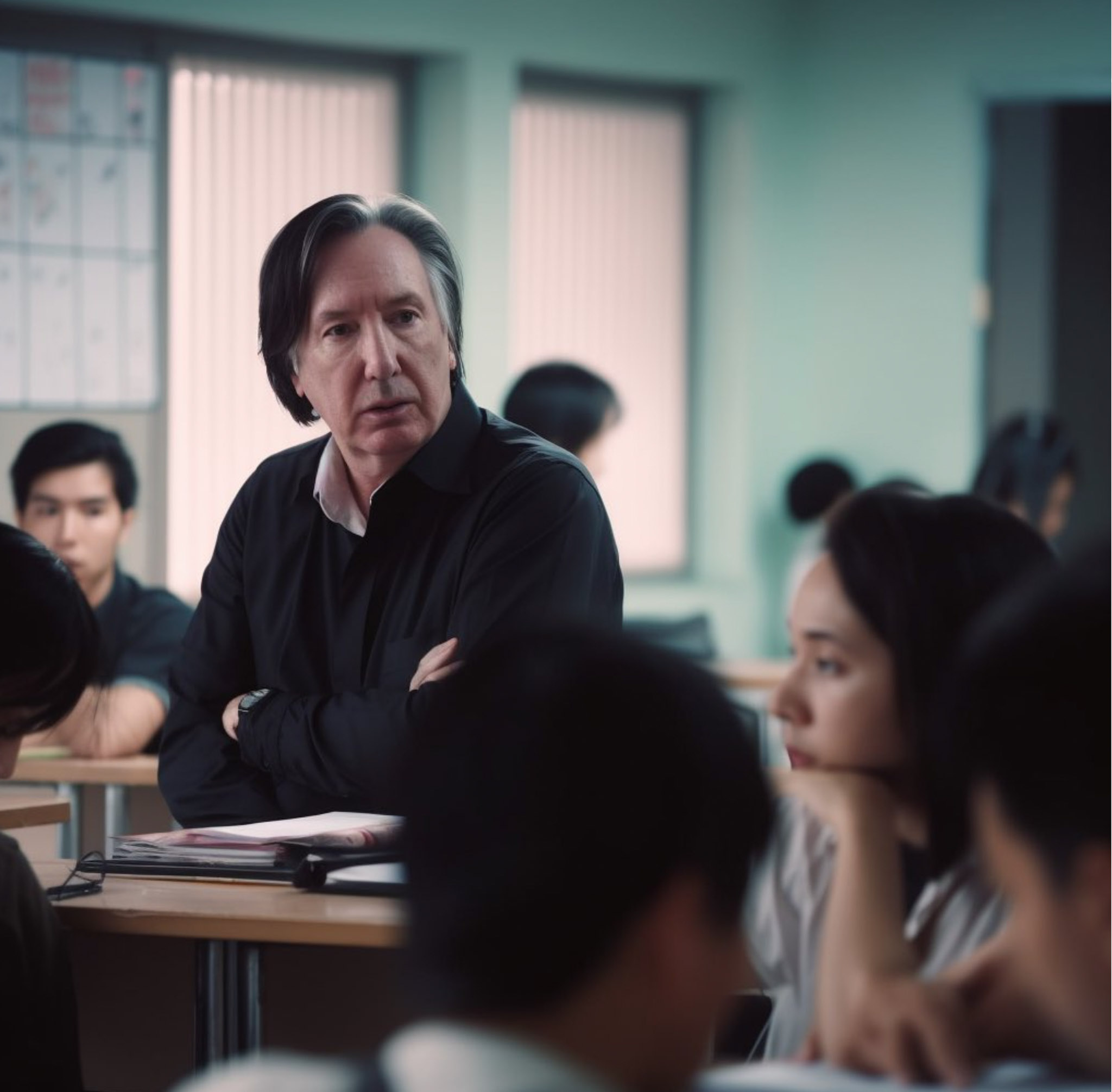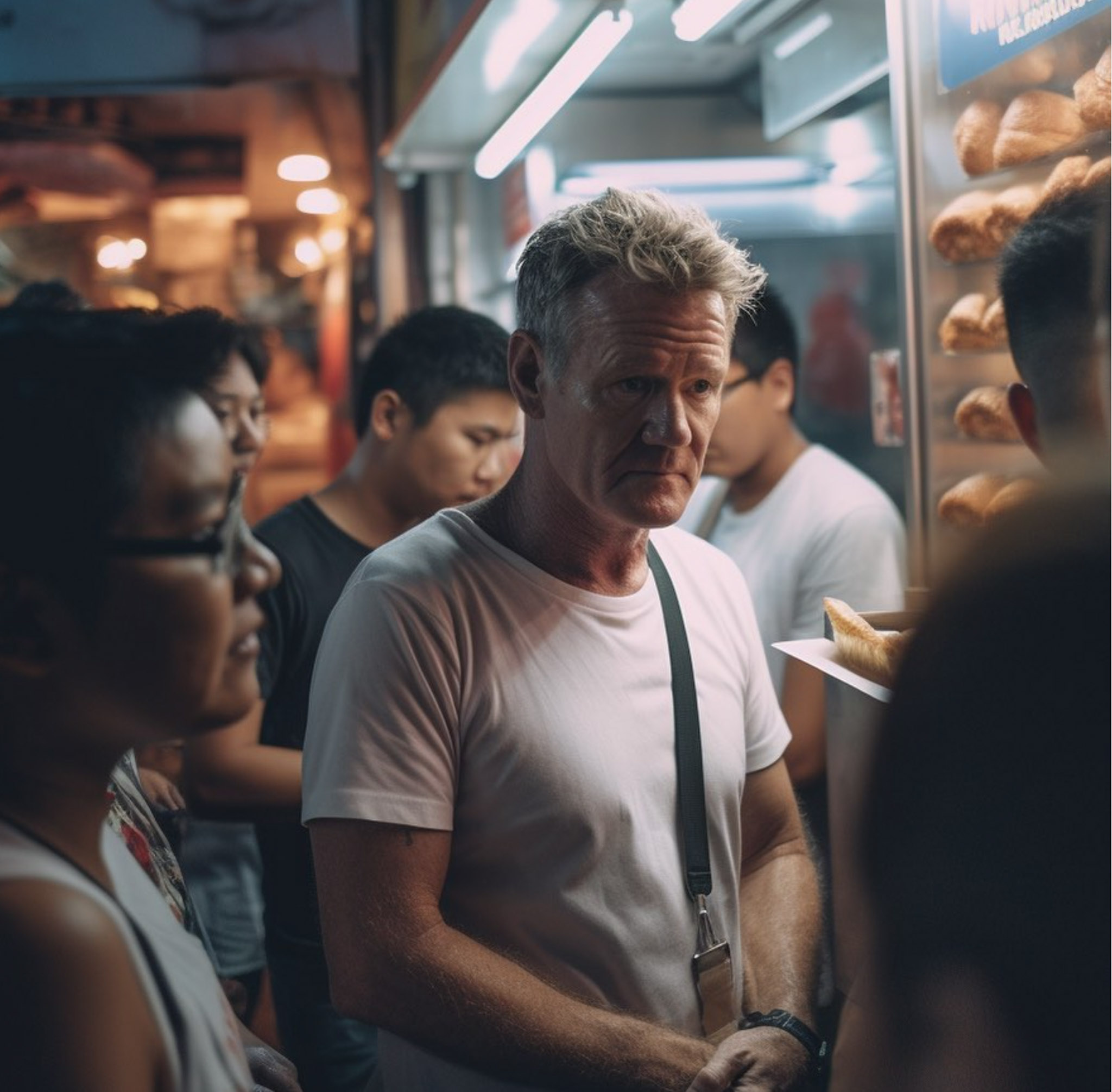Sharmain Lim: Bringing Hollywood to Singapore
ISABELLE NG chats with Sharmain Lim to find out why she uses AI-generated art to humorously place Hollywood celebrities in everyday Singaporean settings.
BY
Isabelle Ng
Deputy Editor
Hype Issue #57
Published on
June 21, 2023
Have you ever seen Tom Holland waiting for his friends to arrive at Redhill Market? Or Iron Man casually sipping on his Teh Tarik at a coffee shop? Well, such encounters are unlikely to be part of your everyday experiences.
That’s precisely why Singapore Spotting has gained popularity among netizens. Many of them have clearly found it amusing to witness major Hollywood celebrities being “humbled” in a Singaporean setting, experiencing everyday life just like us.

Tom Holland “choping” a table while waiting for his friends to text him after saying they are on the way for the past 30 minutes. Photo taken from @Singapore_Spotting on Instagram
For those unfamiliar, Singapore Spotting is an Instagram page dedicated to AI-generated fictional images of celebrities spotted in Singaporean settings. Created by Sharmain Lim, 29-year-old art director at RAPP, a global creative marketing agency, the account brings light-hearted humour with a Singaporean twist.
“It really is a fever dream to imagine celebrities that we’re used to seeing in Hollywood here in a Singaporean context,” said Ms Lim.
She explained that the images are generated using Midjourney, a generative AI software that can convert natural language prompts into images.

Professor Severus Snape is shown being annoyed at Clarice for not paying attention in his sociology tutorial at the National University of Singapore (NUS), generated using Midjourney. Photo taken from @Singapore_Spotting on Instagram.
Despite its recent establishment in April 2023, Singapore Spotting has swiftly amassed a following of more than 1.5k users, including notable figures like Singaporean singer-songwriter, Jasmine Sokko. Several of their images have also been featured on the Instagram page of a local magazine, FEMALE Singapore.
“I’ve been using Midjourney as part of my creative process for work,” said Ms Lim. Whilst journeying with the AI software, she created Singapore Spotting’s first post by chance.
Singapore Spotting’s first post featured an iconic moment of “Ariana Grande & Snoop Dogg enjoying a sandwich at Singapore River”. When asked about the inspiration behind it, Ms Lim said, “It was my first fictional AI illustration and at that time, I had just gotten off a bunch of Superbowl performances and it came up as a thought!”

Snoop Dogg (left) and Ariana Grande (right), enjoying a sandwich at the Singapore River, generated using Midjourney. Photo taken from @Singapore_Spotting on Instagram.
Ms Lim describes Midjourney as an “intense stock image library” to gain inspiration for her creative process. It helps speed up her usual visualisation process, which most often or not ends up with her staring at her Photoshop screen.
“Most of the time I’d be inspired by real-life situations of the day,” Ms Lim said as she explained the thought process behind designing a post.
However, despite its ingenuity and effectiveness, AI art has also sparked a conversation regarding the boundary between inspiration and plagiarism.
“It’s always based on the intention behind creating a piece,” said Ms Lim. “If one’s intention is to copy and plagiarise, then ethically it will be questionable”.
However, she emphasised that creating something inspired is “always about putting your own twist or interpretation” to the initial idea.

Gordon Ramsay at Geylang Serai Bazaar deciding whether to buy Epok Epok or Ramly burger. Photo taken from @Singapore_Spotting on Instagram.
In the arts sector, the debate surrounding the use of AI and the fine lines in between will not be easily resolved. However, there are some steps we can take to minimise the potential for controversy.
According to PlagiarismToday, a site that addresses plagiarism concerns in today’s context, one way to reduce controversy would be to always disclose AI art.
Johnathan Bailey, a writer at PlagiarismToday, stated that art that is generated by AI, whether wholly or partially, should be disclosed as it helps avoid any potential feelings of being misled by the artwork.
For Singapore Spotting and her creative ideations, Ms Lim is mindful of ensuring the generated images do not plagiarise a particular artist’s style. In Singapore Spotting’s Instagram bio, it is clearly stated that the images are generated using Midjourney which provides transparency about the artworks’ origin.
Regarding whether the integration of AI in the arts sector could potentially result in a decline in creativity and uniqueness, Ms Lim strongly disagrees.
“I feel like it wouldn’t, simply because people are always driven to create something different,” Ms Lim said.
She added that while “AI can’t replicate the nuances of human craft”, it can undeniably accelerate the process of creative ideation and value-add to the creator’s original idea.
“I see it more as a tool to help you instead of something that would replace you,” said Ms Lim.

Situs slot thailand merupakan sebuah platform penyedia berbagai permainan judi online mulai dari slot dan permainan lainnya seperti sbobet, tembak ikan, live casino, poker dan arcade. Dengan perkembangan jaman yang begitu cepat membuat kalian yang ingin bermain permainan seperti yang barusan kami sebutkan menjadi sangat mudah saat ini bahkan jika kalian ingin bermain permainan casino luar negeri misal nya seperti slot thailand ini sudah menjadi sangat mudah.
relax everyday